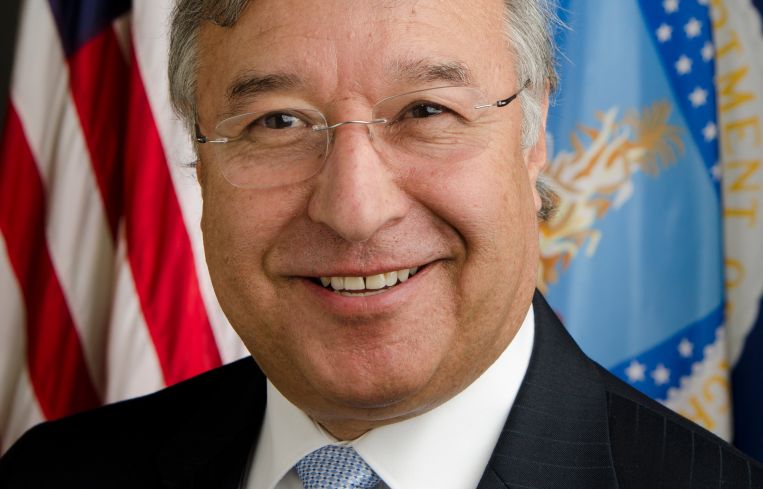USDA’s Tony Hernandez Talks Rural Community Finance
By Damian Ghigliotty June 5, 2015 11:55 am
reprints
Tony Hernandez spent more than a decade marketing for IBM Corporation before taking over as administrator of the U.S. Department of Agriculture’s Rural Housing Service. He told Commercial Observer by email about his current role, working with New York-based lender and developer Greystone, and the importance of advocating for the disadvantaged in rural communities throughout the country.
Commercial Observer: Where did you grow up?
Mr. Hernandez: I grew up in West Denver, Colo.
When did you first get involved in government work?
Beginning in 2007 with the State of Colorado, I led and managed the department of Local Affairs, a division of 51 full-time equivalent employees, with a $100 million budget that focused on enhancing the livability and sustainability of communities integrating jobs, housing, education, transportation, environment and health through strategic community development in primarily rural communities.
This effort was based on providing assistance to 64 counties, 271 municipalities and 3,000 special district local governments in budgeting, strategic planning, identifying local government needs and providing appropriate technical and financial assistance to help the local governments to succeed and improve their capacity to provide services to their citizens.
You worked as a senior marketing representative for IBM for 13 years. Why did you give it up?
My experience with IBM gave me the knowledge and experience I needed to successfully motivate a team to do the best work they possibly could do. I left because I wanted to use those management skills for a greater good. I wanted to focus my career on positively impacting people’s lives by advocating for Americans less advocated for.
You were sworn in as the Rural Housing Service Administrator in December 2013. What are some of your biggest initiatives since then?
My major initiative since I began with Rural Housing Service has been to modernize and enhance our customer service practices. RHS strives to be easy to work with. To achieve this we are specifically focusing on enhancing our predictability, consistency, the quality and accuracy of communications and our transparency.
How does your current role tie into housing and real estate?
I manage the Single Family Housing Program portfolio of $26 billion and the Multi-Family Housing Program portfolio of $11 billion in loans, loan guarantees and grants that are awarded to help communities achieve economic development and increase the availability and affordability of homes across rural America.
Our Single Family Housing Programs provide grants, loans and loan guarantees to very-low- and low-income rural families wishing to realize the American dream of homeownership or improve the sustainability, safety and accessibility of their existing homes. Our Multi-Family Housing Programs help nonprofit affordable housing developers build new and rehabilitate existing affordable housing communities in rural areas.
You’ve worked with Greystone on several deals. In what capacity?
USDA Rural Housing Service has partnered with Greystone to transfer and rehabilitate 143 communities made up of 5,073 affordable homes for rural Americans. [Those include] 13 communities in Alabama made up of 398 homes, one community in California with 65 homes, 44 communities in Georgia made up of 1,362 homes, 19 communities in North Carolina made up of 614 homes and 80 communities in South Carolina made up of 3,097 homes.
What is the most interesting Greystone deal you’ve been involved in?
Every time RHS collaborates with Greystone we do amazing work to renovate the homes—and lives—of people in rural America. One of my favorite projects took place in Georgia in 2013 where we financed Greystone’s acquisition and rehabilitation of 44 multifamily housing communities, consisting of 1,362 homes serving low- and very-low-income households spanning across 30 counties. The rehabilitation took place in one year, and during that year more than $34 million was spent on Georgia contractors to spend on local hotel stays, grocery stores and hire many local employees. Together we did so much more than renovate a few homes—we invested in the local communities and the people who need our programs the most.
Who are some other developers and lenders you work closely with?
On the multifamily side RHS works with lenders such as Bonneville Mortgage and Lancaster Pollard Mortgage to do the same types of large property transfer and rehabilitations. We also work with consultants and tax credit syndicators including Churchill Stateside, The Summit Group and CAHEC and with many large developers including The Woda Group and The Pendergraph Companies.
What is one of the biggest challenges when it comes to financing rural community rental properties in 2015?
I think the biggest challenge with transferring and rehabilitating multifamily communities is trying to find the financing for the smaller scale properties needed in rural areas. Lenders are less willing to finance smaller properties; it’s less cost-effective and less profitable to finance a million-dollar, 24-home community in what is often a hard to reach rural area than it is to finance a $50 million, 200-unit community in a city. For this same reason, other third-party funders like state housing finance agencies are more focused on urban areas as well.
Yet, this is why Rural Housing Service exists: to advocate for those rural communities that need assistance but are forgotten or written off as less important because of their smaller populations. RHS collaborates with lenders and state agencies to ensure rural America sees the same assistance toward economic development as their urban counterparts.


